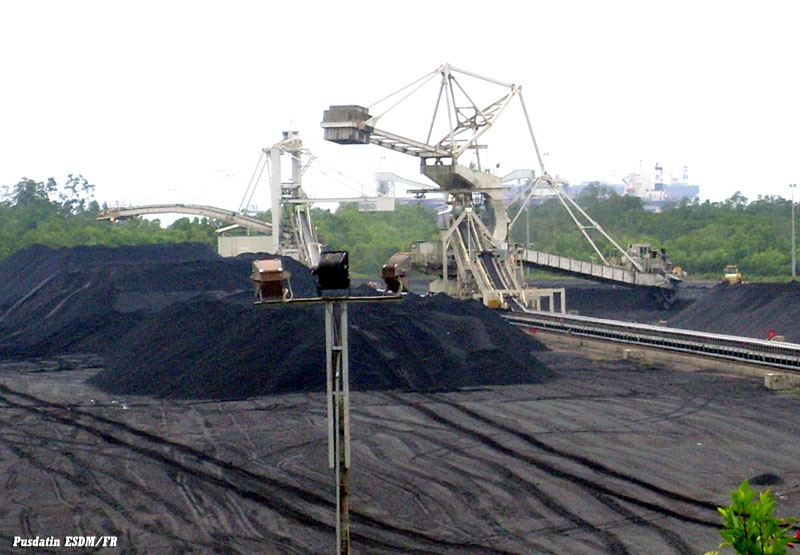
Performance Report of 2020 and Work Plan for 2021 of New, Renewable Energy Subsector
MINISTRY OF ENERGY AND MINERAL RESOURCES
PRESS RELEASE
NUMBER: 018.Pers/04/SJI/2021
Date: 15 January 2021
Performance Report of 2020 and Work Plan for 2021 of New, Renewable Energy Subsector
Director General of New, Renewable Energy and Energy Conservation (NREEC) of Indonesian Ministry of Energy and Mineral Resources (EMR) Dadan Kusdiana made a press conference on the Performance Report of 2020 and the Work Plan for 2021 of the NREEC subsector at Slamet Bratanata Building in Jakarta on Thursday (14/1).
Dadan said the capacity of new, renewable power plants in 2020 was up on last year. The (temporary) capacity realization in 2020 was 10,467 MW, while the 2019 realization was 10,291 MW. Additional new, renewable power plant capacity had come from hydroelectric plant (PLTA) Poso of 66 MW, biomass power plant (PLTBm) Merauke 3.5 MW, minihydro (PLTM) Sion 12.1 MW, and rooftop solar power system (PLTS Atap) 13.4 MW.
Amid various global economic challenges, renewables investment in 2020 still recorded a significant amount of USD1.36 billion, mostly from geothermal and hydroelectric investment. Efforts to boost investment in the NREEC subsector have continued to be done to promote economic growth and provide employment.
DG NREEC has also continued to increase the level of local contents (TKDN).
"We'll increase the local contents in stages. Hydroelectric plants have high local contents because this type of power plant has been developed for a long time. Biomass power plants also have quite high local contents, above 50%. For geothermal power plants, the level is relatively stable at 33%," said Dadan.
Despite the pandemic, the non-tax state revenue (PNBP) in 2020 from the NREEC subsector, especially geothermal, contributed Rp 1,964.22 billion or about 146% of target Rp 1,342 billion.
For renewables share in 2020, consolidation between DG NREEC, Center for EMR Data and Information, and Secretariat General of Indonesia National Energy Council showed a result of 11.51% of target 13.4%. Although off target, the percentage was up on last year, which was 9.2%. "It's a long way to achieve the 23% share but with (additional) 2.36% in one year, it's still a success," said Dadan.
Additionally, DG NREEC has successfully reduced CO2 by 64.4 million tonnes of CO2 of target 58.0 million tonnes of CO2, from renewable energy utilization 53%, energy efficiency 20%, the use of low-carbon fossil fuel 13%, clean technologies at power plants 9%, and post-mining reclamation 4%. The emission reduction in the EMR sector achieves the national commitment to reduced emissions set out in Law Number 16 of 2016 on Ratification of the Paris Agreement to the UNFCCC and Presidential Regulation Number 61 of 2011 on National Action Plan of Greenhouse Gases (RAN-GRK).
The energy saving until December 2020 was recorded at 5.7% (temporary data) against the energy consumption in Business as Usual (BaU) scenario. The total energy saving from household, transportation, industrial, and office/commercial building sectors was about 56.6 million (Barrel of Oil Equivalent, BOE). For 2021, the total energy saving target is set at 63.3 million (BOE) at all sectors, while the energy consumption in the BaU scenario is projected to reach 1,037 million (BOE) and the saving target percentage against the BaU is 6.1%.
Dadan went on to explain that the Indonesian Government has continued to increase biodiesel use to cut import and save foreign exchange. Through the mandatory 30% biodiesel (B30) launched in January 2020, the domestic use of biodiesel was recorded at 8.46 million Kilo Liter (KL). This success has contributed to the saving in foreign exchange of Rp 38.31 trillion or around USD 2.66 billion. The calculation has used the average MOPS of Solar diesel in 2020 at USD50 per barrel and an exchange rate of Rp14,000 per USD.
Because of the Covid-19 pandemic, biodiesel use in 2020 was 12% off target, namely at 8.40 million KL out of target 9.55 million KL, in line with reduced solar diesel consumption. Meanwhile, compared to purchase order (PO) target, the realized biodiesel absorption in 2020 was 90.08% out of PO target 9.33 million KL.
In 2020, a total of 13,082 solar public lights (PJU-TS) were installed out of target 18,888. Between 2016 and 2019, as many as 46,613 solar public lights have lighted 2,300 km of streets in 258 regencies/cities.
A budget of Rp 1,167.8 billion has been allocated to build NREEC infrastructure in 2021. Most of the amount will be spent on procurement of capacitors (electric power storage device, APDAL) and installation of solar public lights. The infrastructure development plan of the NREEC subsector in 2021 is as follows:
a.Infrastructure planning and monitoring with a target of 19 documents/recommendations,
b.Installation of 22,000 solar public lights,
c.Procurment of 43,192 capacitors (APDAL),
d.Construction of 23 solar power systems (PLTS), with 6 rooftop systems will be built at the offices of the Indonesian National Armed Forces (TNI) and 17 ground mount solar systems installed at TNI border posts,
e.Revitalization of 8 units of renewable energy infrastructure, and
f.Construction of rooftop power plants with a total capacity of 11.8 MWp.
On this occasion, Dadan also spelt out the strategic programs of DG NREEC to lift renewable share in the future, such as:
a.Mandatory B30: a program that requires the blending of 30% of biodiesel into 70% Solar diesel oil. The Indonesian Government has made sure the program will be implemented in 2021.
b.Biomass co-firing: using biomass to co-fire coal power plants (PLTU).
c.Addition to renewables capacity through the massive development of solar power plants (PLTS), whether rooftop, large scale, or floating.
d.Conversion of high-emission, fossil-fired power plants into renewable-based, environmentally friendly power plants. (IY)
Head of Bureau of Communication, Public Information Services, and Cooperation
Agung Pribadi
(08112213555)
Share This!






